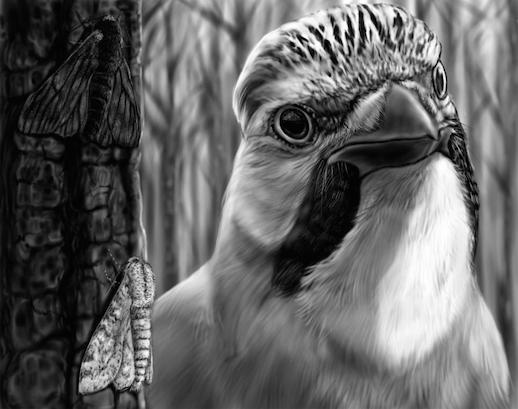John M Marzluff; Welcome to Subirdia: Sharing Our Neighbourhoods with Wrens, Robins, Woodpeckers, and other Wildlife
303 pages, Yale University Press. Out now
Review by David Callahan
Until a year ago I lived in Whitechapel in London, where among the tower blocks and markets it was possible to see Peregrine Falcons, Grey Wagtails and even the occasional Black Redstart if you knew where to look, and kept your eyes and ears open. More recently I moved further out, and began to see small flocks of feral parakeets flying over, the increased green space also adding sightings of parkland birds like Jay and Mistle Thrush on morning walks to the bus stop.
This intermingled green and concrete fringe to the city is what academic John Marzluff calls ‘subirdia’, and he and his students have made a career-long study of how wild birds (and the odd introduced species) adapt and survive in such bustling man-made habitats, all over the world.
The results of these studies are what makes up the bulk of Welcome to Subirdia. Despite being based in Seattle and largely writing about American birds, there is enough about other cities in the developed world to make the book relevant to most readers
However, it is the details and digressions that hold your attention throughout. Though a scientist, Marzluff has an enjoyable gift for the less empirical anecdote which makes it a pleasure to follow him through through chapters on human neighbourhoods and their analogues of natural habitats, and the privations and opportunities available for the surprisingly large number of birds that live there, often without our knowledge. Discovering these, as any city-based naturalist knows, brings the joy of a uncovering a hidden secret, and the book itself reads somewhat psychogeographically – or should I say, psychobiologically – because of this.
The author divides birds into three slightly nebulous categories – avoiders (those which can’t live in cities and bypass them), adapters (birds which are able to continue living in a fairly natural way in man-made habitats) and exploiters (species which actively and successfully use our structures and environments to their own ends). These categories are a little too vague, though he is aware that each species’ role can change from city to city and country to country. However, he is clearly unfamiliar with some European birds – Jackdaw is termed an avoider, but it frequently nests in chimneys and roofs in the suburbs of British cities, while Wryneck is not usually resident anywhere in Britain, and is thus a poor example to use as an ‘avoider’ species in London.
That said, the book majors in American birds and on these, Marzluff excels. He establishes the sense of flux present in cities, both ecologically and sociologically, and leads the reader through fascinating examples of evolution, adaptation and behaviour. Inca Doves in Arizona form pyramids to keep warm in harsh winters; Blackcaps in Britain evolve into an entirely new subspecies reliant on bird feeders, while their cousins are wintering in Spain; eagles fish the industrial rivers of Berlin and Seattle; and the industrial estates of the United States have a richer bird fauna than nearby mature forest. Starlings appear to have had little effect on pre-existing American birds when they were introduced from Europe, and it appears that they have mostly used buildings to nest in and avoided competing with the natives.
Towards the finish he expounds on the presence of birds in cities (and by extension all nature) as ‘good neighbours’, and investigates ways that we can ensure that this is mutually beneficial. Some of his conclusions will be more popular than others – for sure, there are ways to make our windows less deadly to the millions of birds killed by flying into them each year, but how can we control the tens of millions of cats that kill hundreds of millions of birds every year in North America and Europe?
He ultimately implores the civic-minded to improve the ecological condition of our poorest and most rundown areas by restoring native vegetation, tree planting and adding community gardens. This is a tough and politically charged subject, but where it has been tried it has worked in improving people’s lives and children’s educational grasp, at least on a small scale.
The book’s final message is that, with so much nature thriving among us, we should hold out an encouraging hand, and this message echoes down the years from Richard Mabey’s urban wildlife classic, The Unofficial Countryside. But can we afford it, and can we afford not to?
David Callahan’s A History of Bird Watching in 100 Objects is on sale in the Caught by the River shop, priced £18.
